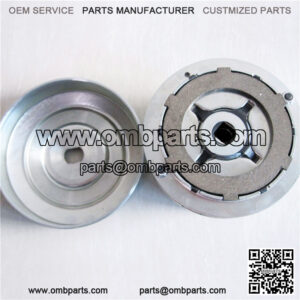Now, with the knowledge that your motorcycle clutch would most likely be a wet multi-plate unit, let us take a look at symptoms of a dying motorcycle clutch: –
Clutch slippage
Clutch slippage is a problem wherein the pressure plate cannot hold the friction plates against the flywheel tightly as required, resulting in an erratic transfer of power. Over time, the friction plates lose their quality to provide sufficient friction, owing to excessive heat and wear and tear. They are not able to hold together very well, resulting in slippage.
The clutch is a robust and heavy assembly, and that is why the clutch lever is generally quite firm and resistive, especially if the clutch assembly is not a slipper-and-assist type. If your clutch lever becomes soft like wool, it might be a sign of a worn-out clutch.In extreme cases, even when you release the clutch lever, the lever still stays pressed in.
Unusual noise, pulsations and vibrations
Sound is an excellent indicator of the health of any vehicle.
An unusual gear shift sense
Gear shifts are directly related to the clutch so quite naturally if the clutch is worn out, the shifts will be unusual. A worn-out clutch will result in a jerky and very unpredictable gear shift. If you experience A. false neutrals quite often, B. hear grinding and squeaking when you shift, C. if the in-gear acceleration is not what it used to be, D. if some gears feel particularly easy to engage while some feel particularly difficult, it is time to check the health of your clutch.
Lower mileage
Another sign of a worn-out clutch is reduced fuel efficiency. A worn-out clutch means that the engine is not able to transmit its power correctly to the gearbox. This would result in lower acceleration and speed for any given increase in engine speed, resulting in lower mileage. If your motorcycle’s mileage has dropped along with a drop in performance, it is time to have those plates checked.
Now, apart from the symptoms, we would also like to share a few tips to increase your clutch’s life.
Don’t ride the clutch
A habit of riding the clutch, or in other words, keeping the clutch lever partially pressed at most times affects the life of the clutch. Riding the clutch over a prolonged period wears out the clutch assembly components prematurely. Use the clutch only when you have to shift gears, make a clean shift and release the clutch lever once done to ensure the longevity of your motorcycle’s clutch.
Rev-match
To avoid a sudden shoot up of the revs after a downshift, you should slightly blip the throttle before releasing the clutch to shoot the engine revs up and match the revs for the downshift for the desired lower gear. Motorcycles with a slipper clutch overcome this problem, but if yours doesn’t have one, ensure that you blip the throttle and rev-match to minimise the damage caused.
Avoid unnecessary, overly aggressive downshifts
As an extension of the above point, you should avoid downshifting aggressively when it is not necessary. Some riders have this habit of shifting down a couple of gears when it is not needed, purely for the noise and its drama. Sure, if you are riding fast you will sometimes need to downshift aggressively, especially around sharper corners. However, always remember that smoothness, not theatrics are key to being fast.
To sum it all up, the clutch is one of the most vital components of your motorcycle.Drive responsibly and safeguard your clutch to get optimal performance and fuel efficiency from your motorcycle in the long term.

